
Directions
-
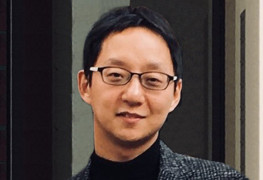
전산학부 김태균 교수 임용
우리 전산학부에 2020년 6월 1일부로 김태균 교수님께서 부임해 오셨습니다. 김태균 교수는 2008년도에 University of Cambridge 에서 박사학위를 받았으며 전공은 컴퓨터비전, 기계학습으로 자세한 이력은 아래와 같습니다. https://cs.kaist.ac.kr/people/view?idx=588&kind=faculty&menu=160 부임을 진심으로 축하 드립니다
...Read more -

KAIST 전산학부 오혜연 교수 ICLR 2021 학회 공동학술위원장 선임
KAIST 전산학부 오혜연 교수가 내년 4월에 열리는 International Conference on Learning Representations (ICLR) 학회의 공동학술위원장을 맡게 되었다. ICLR 학회는 2019년 튜링상 수상자 Yann LeCun 과 Yoshua Bengio가 공동 창시한 학회로, 올해로 8회밖에 안 되었지만 기계학습 분야에서 NeurIPS에 이어 2번째로 큰 규모의 국제학회이다. 2020년은 코비드19의 영향으로 전면 온라인으로 실시되었고 2021년 학회는 5월 초 비엔나에서 열릴 예정이다. 오교수와 함께 네이버 유럽연구소의 Naila Murray가 학술위원장으로 활약하고, 앞서 2020년 ICLR 학회는 KAIST 전산학부 동문인 뉴욕대학교의 조경현 교수가 역임했다.
...Read more -

한동수 교수, ‘실전 스타트업 바이블’출판
KAIST(총장 신성철) 전산학부 한동수 교수는 4차 산업혁명 시대에 창업에 도전하는 사람들이 참고할 스타트업 입문서 ‘실전 스타트업 바이블’을 출간했다. 저자 카이스트 한동수 교수는 의과대학에서 공과대학으로 진로를 바꾼 독특한 이력을 가지고 있다. 또 학부를 3년에 졸업하고 박사를 2년에 졸업한 진기록도 가지고 있다. 교수를 하면서 수차례 창업하여 스타트업의 이론과 실전을 겸비한 전문가이다. 저자는 급격한 변화가 예견되는 4차 산업혁명 시대에 스타트업 창업자가 파악해야 하는 변화의 핵심 내용과 어떻게 대응해야 하는지 알리고 싶어 이 책을 집필했다고 말한다. 저자는 My Story에서 그동안 해온 3번의 스타트업 창업 경험을 풀어놓는다. 독자는 이를 통해 스타트업 창업에서 얻을 수 있는 것들에 대해 간접적으로 경험할 수 있다. 또한 창업 당사자가 직접 들려주는 현실감 넘치는 사업 이야기는 독자가 흥미를 잃지 않고 한 숨에 읽을 수 있도록 한다. 사업 성공에 대한 기대도 한껏 끌어올려주고 있다. 저자는 카이스트 대학원에서 개설한 “스타트업 설계” 그리고 “융합 캡스톤” 수업에서 수년 동안 학생들과 토론한 내용을 책에 담았다. 본인이 경험한 쓰라린 실패에 대해서도 진솔하게 밝히고 있다. 이 책에는 처음 스타트업을 시작하는 사람들에게 참고가 되는 많은 교훈이 있다. 그야말로 스타트업 바이블이다. 저자는 불확실한 미래에 안정적인 길만을 모색할 수밖에 없게 된 청년들에게 스타트업 창업이 4차 산업혁명 시대에는 왜 필수적인 것인지에 대해서도 다양한 관점에서 설득하고 있다. 사업계획서를 작성하고, 발명을 하고, 특허를 출원하는 것에 대해서도 소개하고 있다. 특허 출원에 대한 더욱 자세한 내용은 별도의 책, <이야기로 배우는 특허 실전>에 담겨 출간될 예정이다.
...Read more -
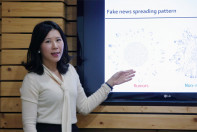
“인포데믹 막아라” 국내 과학자들 나섰다
우리 전산학부 차미영 교수의 “국가에서 국가로 퍼지는 인포데믹(정보감염증)을 막기 위해 이화여대 간호대와 함께 ‘루머 보다는 팩트(Facts before rumors)’ 프로젝트를 시작했다” 과 관련된 언론기사 입니다. 관련기사 보기
...Read more -

[인터뷰] 차상길 교수, “카네기멜론 사이랩 모델 추진”
우리 전산학부 차상길 교수의 인터뷰 내용입니다. [인터뷰] 카이스트 차상길 사이버보안연구센터장, “카네기멜론 사이랩 모델 추진”
...Read more -
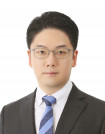
전산학부 김민수 교수 임용
우리 전산학부에 2020년 3월 1일부로 김민수 교수님께서 부임해 오셨습니다. 김민수 교수는 2006년도에 KAIST 에서 박사학위를 받았으며 전공은 데이타베이스로 자세한 이력은 아래와 같습니다. https://cs.kaist.ac.kr/people/view?idx=600&kind=faculty&menu=160 부임을 진심으로 축하 드립니다
...Read more -

정보보호대학원 손수엘 교수 연구진 NDSS 2020에 논문 게재 및 발표
손수엘 교수 연구진은 이번 2020년 2월 24~27일 미국 San Diego에서 개최된 보안 분야 최우수학회 중 하나인 Network and Distributed System Security (NDSS) 에 논문 FUSE: Finding File Upload Bugs via Penetration Testing 을 게재 및 발표 하였다. (Acceptance Rate: 17.4%) 현대 웹 애플리케이션의 파일업로드 기능은 사용자가 만든 콘텐츠를 공유한다는 관점에서, 중요한 특징 중 하나이다. 하지만, 파일업로드 기능은 공격자가 생성한 임의의 파일을 대상 서버에 업로드하여, 대상 시스템을 장악하는 디딤돌로 사용할 수 있는 잠재적 보안 위협이 존재한다. 본 연구에서 Web Security & Privacy 연구실에서는 모의 공격 테스팅 (Penetration testing) 도구 FUSE를 제작하여 WordPress, Joomla등 널리 쓰이는 33개의 실제 웹 애플리케이션에서 30개의 새로운 파일업로드 취약점을 발견하였고, 총 15개의 CVE를 부여 받았다. 또한 해당 기술을 구현한 모의 공격 테스팅 도구 FUSE를 GitHub에 공개하였다.
...Read more -
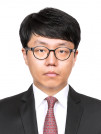
전산학부 허기홍 교수 임용
우리 전산학부에 2020년 2월 1일부로 허기홍 교수님께서 부임해 오셨습니다. 허기홍 교수는 2017년도에 Seoul National University 에서 박사학위를 받았으며 전공은 Program Analysis, Software Security, Programming Language 으로 자세한 이력은 아래와 같습니다. https://cs.kaist.ac.kr/people/view?idx=598&kind=faculty&menu=160 부임을 진심으로 축하 드립니다
...Read more -
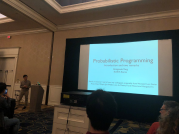
양홍석 교수, ACM POPL 2020에서 초청강연
프로그래밍언어 분야 최상급 학회인 ACM POPL 2020에서, KAIST 전산학부 소속 양홍석 교수가 “Probabilistic Programming: Introduction and Two Remarks”라는 주제로 초청강연을 하였다.
...Read more -

차미영 교수, NetSciX 2020 기조연설
우리 대학 전산학부 차미영 교수가 1월 21일 도쿄 와세다 대학에서 열린 NetSciX 2020 국제학술대회에서 기조 연설을 하였다. NetSciX는 Network Science Society에서 개최하는 겨울학술대회로 복잡계 네트워크를 중심으로 하는 최첨단 융합 연구가 발표되는 자리이다. 이번 학술대회에는 미국 노스이스턴 대학교의 Albert-László Barabási 교수, 프랑스 CNRS의 Alain Barrat 박사, 미국 인디애나 대학의 Katy Börner 교수가 함께 기조 연설자로 발표하였다.
...Read more -
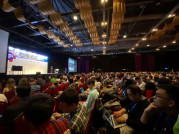
차미영 교수, 젊은정보과학자상 수상 및 EMNLP 기조연설
우리 전산학부 차미영 교수가 12월 19일 한국정보과학회(KIISE)가 수여하는 젊은정보과학자상을 수상했다. 이 상은 정보과학 분야에서 연구개발 실적이 뛰어난 40세 이하의 과학자에게 1년에 최대 한 명을 선정하며, WWW 2014 조직위원회의 후원으로 마련되어 카이스트에서는 이 번에 처음으로 수상하였다. 차미영 교수는 데이터사이언스 및 소셜컴퓨팅 분야에서 가짜뉴스 탐지, 위성영상을 통한 경제지표 유추, 불면증 감지 모델 개발 등의 연구를 해왔으며, 그간의 게재된 논문들은 총 13,000회 이상 피인용되어 학계 내에서 젊은 여성과학자로 선도적인 역할을 해왔다. 2019년 1월부터는 기초과학연구원(IBS)의 유망한 젊은 연구책임자(Chief Investigator, CI)로 선정되어 수리 및 계산 과학 연구단 산하에 데이터사이언스그룹을 운영하고 있다. 차교수는 더불어 올해 11월 홍콩에서 열린 국제 학술대회인 EMNLP (Conference on Empirical Methods in Natural Language Processing)에서 기조연설자로 초청받아 1900명이 등록한 가운데 ‘Current challenges in computational social science’ 주제로 강연을 하였다
...Read more -

제1회 에쓰-오일 차세대과학자상 수상
지난 12월 17일 우리 전산학부 윤성의 교수가 서울마포구 에쓰오일 본사에서 '2019년도 에쓰오일 과학문화재단 시상식에서 1회 에쓰-오일 차세대 과학자상 (IT 부문)을 수상했다. 수상자 선정은 지난 10년간의 탁월한 성과와 높은 잠재력을 가진 45세 이하의 젊은 과학자를 대상으로 선정했으며 윤성의 교수는 컴퓨터 그래픽스 분야에서 실사 렌더링 기술, 컴퓨터 비젼 분야에서 대용량 초고속 이미지 검색 기술, 로봇틱스 분야에서 소리위치 추적 기술 분야 등에서 크게 기여를 인정받았다. 본 시상식은 한국과학기술한림원과 한국대학총장협회, 에쓰오일 과학문화재단 주관으로 진행되었다. https://www.mk.co.kr/news/it/view/2019/12/1057107/
...Read more -

KAIST, 2년 연속 AI기반 취약점자동탐지 부문 우승
[시상 사진 : 정보보호대학원 석사과정 김강수, 전산학부 Corentin Soulet 학생] 우리 전산학부 정보보호대학원 차상길 교수가 이끄는 소프트웨어 보안 연구실 팀이 지난 11월에 진행된 「K-사이버 시큐리티 챌린지 2019 대회」(securitybigdata.kr) 'AI기반 취약점 자동탐지 트랙' 부문에 우승하여 과학기술정보통신부 장관상을 차지하였다. 이는 지난해에 이은 2년 연속 우승으로 그 의미가 더욱 빛났다. 「K-사이버 시큐리티 챌린지 2019 대회」는 과학기술정보통신부(장관 최기영)가 주최하고 한국인터넷진흥원(KISA, 원장 김석환)에서 주관하는 대회로, AI기반 취약점 자동탐지 트랙 본선은 지난 11월 22일(금)에 약 8시간에 걸쳐 진행되었다. 본 대회는 미국 국방성에서 2016년에 주최한 사이버그랜드챌린지(CGC)대회에서 모티브를 얻어 시작되었으며, 한마디로 사람이 아닌 기계들 간의 해킹대회라 할 수 있다. AI기반의 시스템은 스스로 외부의 개입 없이 주어진 프로그램의 취약점을 찾아 그것을 해킹하여 쉘을 획득하게 된다. 차상길 교수는 미국 카네기멜론 대학에서 박사 유학시절부터 해당 연구를 세계적으로 선도해왔으며, 한국에서 자체 기술력 만으로 세계 최고수준의 시스템을 만드는 데에 성공했다는 점에서 그 의미가 크다. 또한 최근 차상길 교수 연구팀에서는 KAIST 사이버보안연구센터와 함께 AI기반 해킹 시스템의 핵심요소 중 하나인 바이너리 분석 엔진을 기존의 엔진보다 10배이상 빠르게 개발하는데 성공하여 세계적 권위의 학술대회에서 최우수 논문상을 수상한 바 있다. 이번 대회에서 소프트웨어 보안 연구실은 "Geumo"라는 이름으로 대회에 참가하였으며, 시스템 개발과 운영을 위해 전산학부 단기유학 학생인 Corentin Soulet, 정보보호대학원 석사과정 김강수, 그리고 차상길 교수가 참여하였다. 팀 대표 김강수 학생은 "지난해에 이어서 좋은 소식을 전할 수 있어서 기쁘다"며, "앞으로의 연구에 이 대회에서 깨달은 지식을 활용하여 사회에 기여할 수 있도록 노력하겠다"라며 포부를 밝혔다. - KISA, ‘K-사이버 시큐리티 챌린지 2019’ 우수 참가팀 시상, 2019.12.05., https://www.kisa.or.kr/notice/press_View.jsp?mode=view&p_No=8&b_No=8&d_No=1852 -‘2018년 정보보호 R&D 데이터 챌린지’ 수상 팀 발표, KISA, 2018.12.06., https://www.kisa.or.kr/notice/press_View.jsp?cPage=1&mode=view&p_No=8&b_No=8&d_No=1740&ST=T&SV=%EB%8D%B0%EC%9D%B4%ED%84%B0%20%EC%B1%8C%EB%A6%B0%EC%A7%80 -“차세대바이너리분석엔진‘B2-R2’오픈소스로푼다”,지니넷,2018.12.24., http://m.zdnet.co.kr/news_view.asp?article_id=20181224091933#imadnews - 차세대 바이너리 분석 플랫폼, https://b2r2.org/, https://github.com/B2R2-org
...Read more -

전산학부 박종세 교수 임용
우리 전산학부에 2019년 12월 1일부로 박종세 교수님께서 부임해 오셨습니다. 박종세 교수는 2018년도에 Georgia Institute of Technology 에서 박사학위를 받았으며 전공은 Computer Architecture 으로 자세한 이력은 아래와 같습니다. https://cs.kaist.ac.kr/people/view?idx=595&kind=faculty&menu=160 부임을 진심으로 축하 드립니다
...Read more -

배두환 교수 SW 산업 발전 유공자로 근정 포장 수상
2019년 12월 2일 개최된 소프트웨어 산업의 날 기념식에서 우리 전산학부 배두환 교수가 SW 산업 발전 유공자로 근정 포장을 수상하였다. 배두환 교수는 KAIST 부임후 약 25년 동안, 인재 양성과 소프트웨어공학 분야 R&D 에 힘써 왔으며, 최근에는 과학기술정통부의 SW 스타랩 협의회장으로 국내 최고의 교수진이 참여하는 SW 연구실(현재 29개)들과 연구 개발 및 인재 양성에 일조하고 있으며, 2018년부터는 KAIST의 SW 교육 센터장으로 부임하여 SW 중심 대학 사업을 맡고 있으며 KAIST 내의 SW/AI 교육 활성화에 노력하고 있다. 영예로운 근정포장 수상을 진심으로 축하합니다
...Read more -
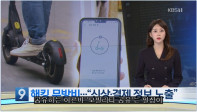
전동킥보드·공유차 해킹 무방비…암호화된 ‘비번’도 빼간다
http://me2.do/FNi187ea 2019년 11월 15일 KBS 뉴스에 보도된 전산학부 기사 입니다. "전동킥보드·공유차 해킹 무방비…암호화된 ‘비번’도 빼간다" 전산학부 김광조 교수님께서 KBS뉴스와 인터뷰 하신 내용이 소개됩니다.
...Read more -

KAIST, 전시회에 IT 기술 접목한 새로운 전시기법 소개
KAIST, 전시회에 IT 기술 접목한 새로운 전시기법 소개 - KAIST 포함 15개의 연구팀 참여하는 스마트과학관 전시연구단 성과 발표 - 과학 문화 콘텐츠를 가상현실·증강현실·미디어 아트 등의 작품으로 전시 KAIST(총장 신성철)는 스마트과학관 전시연구단(단장, 전산학부 한동수) 사업의 일환으로 동영상이 연계된 AR 사진 제작 기법·과학 청진기·로봇 안내 시스템 등의 기술을 11월 7일과 8일 양일에 걸쳐 대전 국립중앙과학관(관장 정병선)에서 전시하였다. KAIST 지능형서비스 연구실(전산학부 한동수 교수), 원더랩(산업디자인학과 이우훈 교수), HCI 연구실(전산학부 이기혁 교수), 컴퓨터 그래픽스 및 가시화 연구실(전산학부 박진아 교수) 등이 참여하는 이번 행사에는 전시콘텐츠·전시운영기술·전시기반기술 분야에서 15개의 연구팀이 성과물을 선보였다. 분야 전시명 연구 기관 전시콘텐츠 VR/AR/홀로그램 과학문화 콘텐츠 연세대, 전자부품연구원, 목포대 과학문화유산 미디어아트 콘텐츠 광주과기원, 공주대 창의과학체험 교육 콘텐츠 이화여대, 교통대 O2O 기반 실감형 버츄얼 과학관 서울교대, KAIST 전시운영기술 동영상이 연계된 AR 사진 제작 기법 KAIST 로봇 안내시스템 KAIST 과학관 빅데이터 분석 기술 부산대 전시기반기술 과학문화 전시콘텐츠 공유플랫폼 한남대 과학문화전시 큐레이션 기술과 오감자극 전시 디자인 기술 KAIST, 한양대, 가평 천문대 'VR/AR/홀로그램 과학문화 콘텐츠', ‘O2O 기반 실감형 버츄얼 과학관', '동영상이 연계된 AR 사진 제작 기법', '과학문화전시 큐레이션 기술과 오감자극 전시 디자인 기술' 등이 출품되어 8일에는 각 연구팀의 발표도 진행되었다. 한국연구재단에서 지원하는 과학문화전시서비스 역량강화지원사업은 전국 과학관·박물관·미술관 등에 실내 위치 인식 기술·증강현실(AR)·가상현실(VR)·사물인터넷(IoT)·인공지능(AI) 등의 최신 IT 기술을 접목한 서비스를 도입해 관람객을 위한 새로운 전시 체계를 개발하는 연구를 수행하고 있다. 참여 연구팀은 각 지역의 과학관과의 협업을 바탕으로 일상생활이 곧 실험실이 되는 '리빙랩(Living Lab, 생활실험실)을 운영하며 연구와 개발을 진행 중이다. 한동수 스마트과학관 전시연구단장은 "국제과학심포지움과 함께 진행되는이번 전시는 체험하는 과학, 실감하는 과학·상상을 현실로 만드는 과학을 목표로 진행하고 있다ˮ고 강조했다. 이어, 한 단장은 "실내 위치인식·로봇·인간/컴퓨터 상호작용(Human -computer interaction)·AR/VR과 같은 최신 IT 기술을 접목시킨 연구팀의 땀과 노력이 관람객들의 공감을 얻을 수 있기를 기대한다.”고 밝혔다. (끝) (사진설명) 사진1: 동영상이 연결된 AR 사진 제작 및 상영 시스템(지능형 서비스 연구실) 사진2: 과학 청진기(원더랩, HCI 연구실) 사진3: 한국 미라 체험(컴퓨터 그래픽스 및 가시화 연구실) 각 1부, 끝.
...Read more -
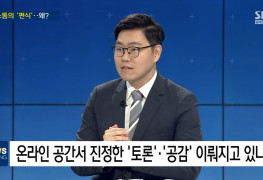
김주호 교수, '정말 내 생각일까?'…SBS D포럼, 한국 사회 점검 / SBS / 주영진..
...Read more -

신인식 교수, ACM MobiCom 2019 Best Paper Award 수상
KAIST 전산학부 신인식 교수 연구팀, ACM MobiCom 2019 국제학회에서 Best Paper Award 수상 KAIST 전산학부 신인식 교수 연구팀은 10월 21-25일 멕시코 로스 카보스에 열린 ACM MobiCom (The 25th Annual International Conference on Mobile Computing and Networking) 2019 국제학회에서 “FLUID: Flexible User Interface Distribution for Ubiquitous Multi-device Interaction” 논문으로 ‘최우수 논문상(Best Paper Award)’을 수상했다. KAIST 전산학부 신인식 교수 연구팀은 10월 21-25일 멕시코 로스 카보스에 열린 ACM MobiCom (The 25th Annual International Conference on Mobile Computing and Networking) 2019 국제학회에서 “FLUID: Flexible User Interface Distribution for Ubiquitous Multi-device Interaction” 논문으로 ‘최우수 논문상(Best Paper Award)’을 수상했다. ACM MobiCom 국제학회는 모바일 통신 및 컴퓨팅 분야에서 세계 최고 권위의 학회이며, 이 학회의 25년 역사 사상으로 처음으로 한국 주관기관에서 수상했다. 최근 모바일 및 IoT 트렌드는 다양한 스마트 기기의 등장이다. 초고속 5G 등장 뿐만 아니라, 듀얼스크린폰 및 폴더블폰 등 새로운 스마트폰 디스플레이의 출현, 그리고, 스마트 워치, 스마트 TV 및 스마트 자동차 등 다양한 스마트 기기들이 속속 출시되고 있다. 그러나, 현재의 모바일 앱 개발 및 사용은 단일 기기 (single-device) 모델에 국한되어 있어, 새로운 트렌드가 제공하는 다중 기기 (multi-device) 잠재성을 제한하고 있다. 본 연구팀은 이러한 고정 관념 및 기술적 한계를 타파하며, 새로운 다중 기기 패러다임을 제시하는 모바일 SW 플랫폼 기술 “FLUID”를 개발하였다. 이 논문의 제1저자인 오상은 박사과정 학생은 단일 기기 가상화 (virtualization) 기술을 핵심 기반 기술로 소개하며, FLUID를 통해 개별 앱의 UI(사용자 인터페이스, User Interface) 요소들을 사용자가 원하는 대로 여러 기기에 배치할 수 있으며, 이미 시판중인 기존 모바일 앱을 수정하거나 재개발하지 않아도 다중 기기 환경에서 새로운 형태로 앱을 사용할 수 있다고 밝혔다. 미국 버팔로 대학교 Steve Ko 교수와 공동 연구로 진행된 이 연구는 10월 22일 ACM MobiCom 2019 국제 학회에서 발표되었으며, 현장 기술 시연을 통해 다양한 다중 기기 사용 시나리오들을 선보였다. 신인식 교수는 "제안하는 FLUID 플랫폼이 가지는 높은 유연성과 범용성은 현재 단일 기기 패러다임에서 새로운 다중 기기 패러다임으로 전환하는 것을 가속화할 것으로 기대하며, 이러한 패러다임의 전환은 지금껏 생각할 수도 없었던 새로운 형태의 앱 활용을 가능케 할 것이다"고 밝혔다.
...Read more -
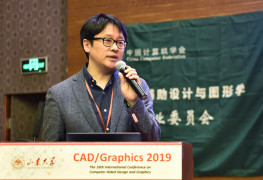
김민혁 교수, CAD/Graphics 2019에서 기조강연
김민혁 교수, CAD/Graphics 2019에서 기조강연 KAIST 전산학부 김민혁 교수는 지난 5월 5~6일 중국 청도에서 개최된 Computer-Aided Design and Computer Graphics (CAD/Graphics) 2019에서 “Beyond Human Vision - Seeing More with Camera” 주제로 기조강연을 하였다. 김민혁 교수는 기조강연에서 압축 초분광 이미징의 기초에 대해서 설명하고 정확하면서도 실용적인 소형의 초분광 이미징 카메라 연구와 관련해서도 이야기했다.
...Read more -

신성용 교수, Lifetime Achievement Award 수상
신성용 명예교수님, AsiaGraphics Lifetime Achievement Award 수상 KAIST 전산학부 명예교수 신성용 교수님께서 그래픽스 분야에서 뛰어난 리더십과 기여로 이번 Pacific Graphics 2019에서 AsiaGraphics Lifetime Achievement Award을 수상하셨습니다. 신성용 교수님는 서울대학교의 김명수 교수님과 함께 Pacific Graphics의 창립자이기도 합니다. 축하드립니다!
...Read more -

중앙대, 김진형 前인공지능연구원장 석좌교수 초빙
우리 전산학부 김진형 명예교수의 중앙대 석좌교수 초빙관련 기사입니다. 연합뉴스 (2019.09.04) 에듀인뉴스(2019.09.04)
...Read more -

카이스트, 독일 사이버 보안 분야와 MOU 체결
KAIST(총장 신성철)는 8월 28일 수요일(현지시각) 오전 9시에 독일 자르브 뤼켄에서 독일 정보보안센터(CISPA(Helmholtz Center for Information Security))와 KIST 유럽연구소와 같이 국내 대학 중 최초로 정보보호 관련 협력과 공동 목표에 관해서 MOU를 체결했다. KAIST, CISPA, 그리고 KIST 유럽은 이날 협약체결을 통해 ▲공동 프로젝트 추진 ▲시스템 보안, 웹 보안, 암호학 등 분야 관련 협력 ▲ KIST 유 럽의 테스트베드 플랫폼 공동사용 등 다양한 분야에서 협력하기로 했다. 독일의 CISPA는 2018년 헬름홀츠(Helmholtz) 연구협회 연구센터로 선정되 었다. 헬름홀츠 연구협회는 독일 최대의 연구기관이며 연간 439억 유로 예 산을 투입하고 있다. 2018년 2월 헬름홀츠 연구협회는 CISPA를 협회 최초 로 IT분야를 수행하는 대형연구센터로 출범, 2026년 최소 500에서 800명 연구인력을 지닌 대형연구센터를 목표로 발돋움 중이다. 현재, CISPA는 최 근 4년동안 정보보호 분야의 TOP 4 국제학회에서 세계 최고의 연구 실적 을 올렸고(csrankings.org 기준 세계 1위), 매년 500억원(원화 기준)이 넘는 연구비를 헬름홀츠 연구협회에서 지원을 받고 있다. 28일(현지시각) MOU 행사와 더불어, 독일 대사관에서 개최한 한독 사이버 보안 세미나를 통해 세계 최고 수준의 보안 분야 기술을 소개하는 시간을 가졌다. 특히, 오후에 개최된 “데이터 보호, 웹 보안, 시스템 보안을 위한 연구자들(워크숍)”에서는 신인식, 강병훈, 손수엘 교수 등이 KAIST를 대표 해서 각각 시스템 보안 및 웹 보안 내용을 발표하며, CISPA와 공동 협업 주제를 구체화하였다. 향후, KAIST 정보보안대학원은 이번 MOU 참여 기관들과 같이 공동 프로 젝트, 세미나 및 인턴십 등을 추진할 예정이다. 이를 통하여 공동 기술개 발, 인력양성 및 산학협력 등에 이바지하여 세계 최고 수준의 대학원으로 거듭 발전할 계획이다. 이날 행사에는 KAIST 정보보호대학원 신인식 책임교수, CISPA 마이클 벡 키스 소장, 김준경 KIST 유럽연구소장 등이 참석해서 MOU에 서명했다.
...Read more -
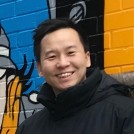
KAIST 전산학부 졸업 허성국박사, 미 버지니아 대학교 (University of Vir..
KAIST 전산학부에서 2017년 박사학위를 받고 현재 토론토 대학교 (University of Toronto) 에서 박사 후 연구원으로 근무 중인 허성국박사(지도교수 이기혁)가 2019년 8월 12일부로 미 버지니아 대학교 (University of Virginia) 전산학과 (Department of Computer Science) 조교수로 임용되었다. 허성국박사는 인간과 컴퓨터 간의 상호작용 방법 및 이를 지원하기 위한 입출력 기술에 관한 연구를 진행하여 왔으며, CHI, UIST, CSCW 등 HCI 분야의 최고 학회와 IEEE Transactions on Haptics 등의 학술지에 연구 결과를 발표해 왔다. 이와 같은 연구 성과에 기반하여 허성국박사는 2016년 네이버 Ph. D. 펠로우십도 수상하였다.
...Read more -

KAIST, 개발기간 줄여줄 새로운 프로그래밍 방법론 도출
우리 전산학부 류석영 교수의 자바(Java) 개발을 주도한 가이 L 스틸 주니어 미국 오라클 랩 박사와 프로그래밍 언어 '포트리스' '스칼라'의 새로운 '타입 시스템'을 정의하고, 이를 수학적으로 증명하는데 성공한 기사입니다. 기사보기
...Read more -

개방형 에너지 클라우드 플랫폼 연구단 설립
우리 대학 전산학부 문수복 교수가 과학기술정보통신부의 한국연구재단 과제에 선정되어 지난 6월 20일 “개방형 에너지 클라우드 플랫폼 연구센터 / Center for OECP”를 설치하였다. 총 4 총괄 분야로 구성이 되어 있고, 카이스트의 전산학부, 산업 및 시스템 공학과, 기계공학과, 전기 및 전자공학과, 생명화학공학과, 신소재공학과의 교수진들과 서울대학교, 성균관대학교 연구책임자 등, 총 17인으로 구성되어 미래에너지 기술을 위한 차세대 복합형 에너지 서버 기반 에너지 클라우드 및 네트워크 기술개발을 목표로 하고 있다 선정된 각 과제에는 올해 20억 원(2020년 22억 원)의 예산이 투입되고 연차 평가를 통해 최대 5년간 162억 원이 지원될 예정이다. 연구 분야는 1총괄 : 빅데이터 기반 최적 운영 및 관리기술의 개발, 2총괄 : 에너지 클라우드용 고신뢰 분산 플랫폼 보안 기술개발, 3총괄 : 개방형 에너지 클라우드 플랫폼을 위한 고효율 에너지 서버 개발, 4총괄 : 에너지 클라우드를 위한 빅 에너지 데이터 생성 및 서버 요소의 개발 등으로 나누어진다. 1총괄은 다양한 네트워크 여건변화에 대응하는 인공지능 기술개발로 에너지 클라우드 운영/관리 비용의 획기적인 감소를 전략적 목표로 하고 있으며, 스마트 그리드 디지털 트윈 및 에너지 클라우드 운영/관리 전략 수집 소프트웨어 개발 및 공개, 분산 에너지 자원 최적 운영 및 관리 원천기술 지적 재산권 확보, 에너지 기술 기본계획 수립에 반영 가능한 가치평가시스템 개발과 함께 SCI급 저널 혹은 최우수/우수 학술대회 논문 게재와 학술 발표를 성과 목표로 잡고 있다. 2총괄은 고신뢰 분산 플랫폼 보안을 통하여 안전하고 고성능의 에너지 클라우드 개방형 데이터 플랫폼의 구현을 전략목표로 삼고 있으며, 신뢰성 있고 보안성 있는 수십 테라바이트급 개방형 분산 메모리 데이터 처리 플랫폼 소프트웨어 개발 및 공개와 에너지 클라우드의 주요 자원 식별 및 분류 체계 개발, 블록체인기반 에너지 위변조 방지기술 특허 및 오픈소스 프로그램 개발을 위한 보안 연구를 목표로 한다. 3총괄에서는 재생 에너지의 다양한 부하 추종이 가능한 고효율 에너지 서버 테스트 베드 구현을 전략목표로 하며, 슈퍼커패시터, 이차전지, 수소-연료전지를 통합한 복합형 에너지 서버의 20kW급 테스트 베드 제작, 에너지 클라우드의 여러 요소별 알고리즘 개발 및 적용을 통한 에너지 서버의 효율성 안정성 향상, 급격한 전력 수요 변동에 안정적이고 효율적인 전력변환 회로 및 전력변환 시스템 프로토타입 개발, 신재생 에너지의 불확실성 및 에너지 저장장치 소재 평가를 고려한 에너지 클라우드 최적 디자인, 운전 및 운영 전략 개발, 시스템 설계, 최적화 알고리즘, 전력 변환 회로 등 에너지 서버 설계 기술 6건 이상의 지적 재산권 확보 및 1건 이상의 기술이전과 함께 저널에 논문게재와 학술 발표를 성과 목표로 연구중에 있다. 4총괄은 에너지 클라우드 시스템 공정 모사를 위한 빅 에너지 저장 소재 데이터베이스 구축 및 테스트 베드 시스템 위한 에너지 서버 개발을 전략적 목표로 하며, 시뮬레이션 데이터/텍스트 마이닝 데이터/실험 데이터 융합 에너지 저장 소재 데이터베이스, 다양한 환경 및 분야에서 사용될 수 있는 고체 수소 저장 소재 라이브러리 구축 및 에너지 클라우드 테스트 베드 시스템을 통한 고체 수소 저장 소재 상용화 연구, 다양한 동적변화에 대응 가능한 연료전지 실험 데이터 라이브러리 구축 및 확보와 에너지 클라우드 테스트베드 시스템을 통한 전력 수요에 유연한 연료전지 시스템 최적화, 다양한 운전 조건 및 전해질 유송특성에 따른 셀 데이터와 임피던스를 활용한 전기화학적 데이터 확보를 성과 목표로 한다. 에너지 클라우드 시스템을 구축하기 위해서 여러 가지 종류의 신재생 에너지원이 필수적이고, 무엇보다도 다양한 시간, 장소, 기후 조건 등에 따라 유연하게 해당 에너지원을 생산 및 저장하여 최적의 조건에서 각 에너지원을 이용 가능하게 하는 것이 중요하다. 또한 수소 에너지의 실절적인 활용을 위해서는 변화되는 구동 조건에 따라 안정적으로 수소를 공급하는 것이 중요하고, 이를 위해 효율적이고 안전한 방식으로 수소를 저장하는 기술을 개발하는 것이 중요하다. 본 연구단은 지금까지 알려진 여러 종류의 고체 수소 저장 물질(금속수소화물, 착수소화물, 다공성 물질)들이 각각의 물질 특성에 따라 다양한 조건에서 유연하게 활용될 수 있도록 수소 저장 소재 라이브러리를 구축하는 것을 목표로 함. 고체 수소 저장 소재 종류에 따른 온도 및 압력 등의 구동 조건과 수소 저장 밀도의 수소 저장 성질 변수를 최적화하는 연구를 수행할 것임. 변화하는 조건에 따라 저장된 수소를 에너지 시스템에 공급될 수 있도록 하며, 이는 추후에 연료 전지 및 에너지 저장 세부 그룹들과 협업하여 에너지 클라우드 시스템의 테스트 베드 구축 마련의 초석이 될 것이다. 우리 연구센터은 이번 개방형 에너지 클라우드 플랫폼 연구센터의 개설을 통해 총 5년간의 연구과제를 보다 효율적으로 관리하여 사업화 또는 기술이전을 통한 새로운 서비스를 제공함과 동시에 향후 에너지 산업계에서 정보보호 플랫폼으로서 글로벌 수준의 연구 및 융합형 인재양성의 기틀을 마련할 계획이다.
...Read more -

KAIST 전산학부 김문주 교수, 19th Intl. Conf. on Runtime Ver..
KAIST 전산학부 김문주 교수가 2019년 10월 8-11일에 열리는 19th Intl. Conf. on Runtime Verification (RV) 에서 Test of Time Award를 수상했다. https://www.react.uni-saarland.de/rv2019/ Test of Time Award는 10년 이상 과거 Runtime Verification 학회 논문 중, 연구 커뮤니티에 큰 영향력을 끼친 논문에 주는 상으로써, 2001년 Runtime Verification 학회에 김문주 교수가 제1저자로 발표한 Java-MaC: A Run-time Assurance Tool for Java Programs 논문이, runtime verification 연구 분야를 개척하고 과거 18년간 관련 연구 분야에 큰 공헌을 한 점을 인정받았다.
...Read more -

KAIST 전산학부 부교수 유신, ACM Transactions on Software En..
KAIST 전산학부 유신 교수가 2019년 7월자로 ACM이 발행하는 Transactions on Software Engineering and Methodology (TOSEM) 학술지의 편집위원으로 선출되었다. ACM TOSEM은 IEEE Transactions on Software Engineering (TSE)과 함께 소프트웨어 공학 분야에서 유일하게 SCI에 등재되어 있는 저명 학술지이다. JCR 2017 기준 IF 2.516의 높은 영향력을 자랑하고 있으며, Google Scholar 기준 Software Systems 분야의 학회 및 학술지 순위에서 18위에 랭크되어 있다.
...Read more







